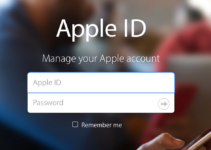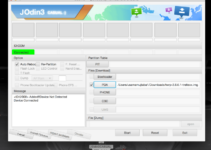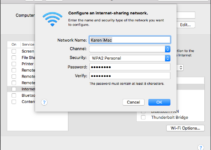Believe it or not, the average iPhone user spends around 4.5 hours per day engrossed in their device’s digital world—and a substantial portion of that time is accounted for within Apple’s Screen Time feature. But when it’s time for a fresh start or a bit of a digital detox, users often ponder, “How to Delete Screen Time Data on iPhone [Updated]?”
The answer isn’t immediately apparent, prompting many to search for a step-by-step guide. Whether you aim to delete Screen Time activity on iOS for privacy, accuracy, or just to declutter, a clean slate is just a few taps away.
Maximizing the benefits of this native tool means learning how to erase Screen Time statistics on iPhone, ensuring that your tech habits remain in check and your device’s operation stays swift.
Key Takeaways
- Understanding the process to delete Screen Time data promotes better privacy management for iPhone users.
- Regularly erasing Screen Time statistics can help maintain accurate and relevant usage data.
- Before selling or transferring an iPhone, it’s advisable to clear Screen Time history to protect personal information.
- Disabling “Share Across Devices” is crucial for preventing Screen Time data sync with other Apple devices.
- For those who’ve forgotten their Screen Time passcode, there are methods to reset it linked to the Apple ID.
- A factory reset is the nuclear option for eradicating all data, including Screen Time information, but use it with caution.
The Necessity of Clearing Screen Time Data on Your iPhone
When it comes to privacy and device management on your iOS device, the Screen Time feature plays a crucial role. Originally designed to provide insights into your digital habits, it may become necessary to clear Screen Time data to maintain control over the information your iPhone holds.
Understanding Screen Time on iOS Devices
Screen Time on iOS devices is more than just a tracker; it’s a mirror reflecting your daily app habits. With comprehensive data showing which apps you frequent and for how long, it adapts and evolves with your usage patterns.
But just as it learns about you, you have the power to reset the narrative, removing stored data to safeguard your privacy, and optimize your device’s performance.
Reasons to Delete Screen Time Information
Users opt to delete Screen Time info on iPhone for various reasons. It could be to reset an accumulated history of app usage, to ensure private data remains confidential, or to prepare the device for a new owner. Moreover, parents who keep track of their children’s screen time might reset the data at the start of each week to monitor their children’s new activity afresh.
- Resetting usage history for a fresh start
- Preventing unnecessary personal usage data storage
- Preparing an iPhone for resale or transfer
Impact of Screen Time Data on Device Performance
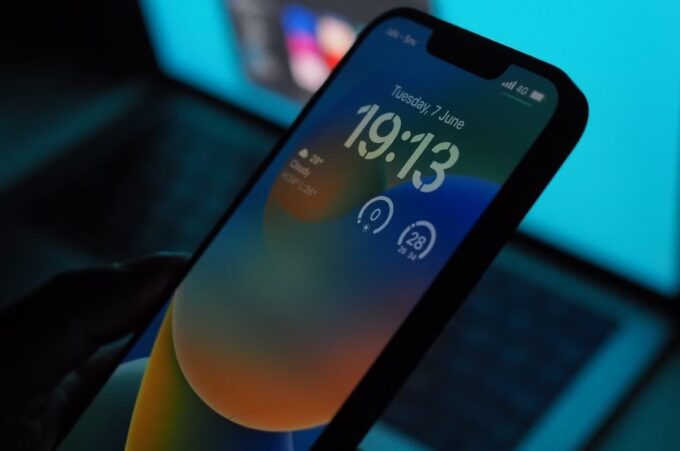
Source: makeuseof.com
Although not instantly noticeable, an extensive Screen Time database can begin to take a toll on your iOS device’s performance. Accumulated data may contribute to slower device responsiveness.
The simple act to clear Screen Time data on an iOS device can be akin to a digital cleanse, potentially restoring the iPhone to a more efficient state. By disconnecting from the weight of unneeded data, the path to improved functionality becomes clearer.
It’s important to remember that unlike Safari’s history, which is swiftly erasable, the Screen Time requires a more involved process. If you think it’s time to remove usage data from the Screen Time app, starting with a reset is the key. Take heed also of the ‘Share Across Devices’ feature, which, if left enabled, will resync the data you just cleared across all devices under your Apple ID.
How to Delete Screen Time Data on iPhone [Updated]
The importance of maintaining privacy and ensuring smooth device performance has become more prominent with the increased scrutiny over digital habits.
In this respect, iPhone users often look for ways to clear Screen Time history on iPhone to keep their usage data private and the phone running efficiently. Deleting Screen Time data from iPhone settings is a straightforward process that can help restore your device to a like-new state in terms of personal usage statistics.
To begin the process of removing Screen Time data, there are a few essential steps users must take:
- Disable Screen Time by going to the ‘Settings’ app, selecting ‘Screen Time’, and tapping ‘Turn Off Screen Time’.
- Enter the Screen Time passcode if prompted.
- Once the feature is disabled, restart it and make sure to toggle off ‘Share Across Devices’ to prevent old data from syncing back to the device.
In instances where the passcode is forgotten, software solutions like Tenorshare 4uKey can help bypass the problem without risking loss of data. As a last resort, executing a factory reset of the iPhone removes all content, including Screen Time data.
However, this step should only be taken after backing up necessary data, as it is irreversible, and will make your iPhone as good as new, removing all personal settings, preferences, and data.
Both methods are effective, but the choice depends on whether you aim to just remove Screen Time data or are looking for a complete cleanse of your iPhone. Here’s a closer look at the advantages and implications of each:
| Action | Advantages | Implications |
|---|---|---|
| Disable & Restart Screen Time | Quick and targeted removal of Screen Time data. | Does not affect other data or settings on the iPhone. |
| Factory Reset | Completely refreshes the iPhone, removing all personal data. | Requires a full backup to avoid data loss. |
Finding the balance between protecting your data and ensuring the longevity of your device’s performance can be achieved through understanding how to delete Screen Time usage on iPhone. Whether you opt for a quick clear out or a full reset, the steps outlined above will help you maintain control over your personal data and device health.
Advanced Tips for Managing Screen Time on iOS
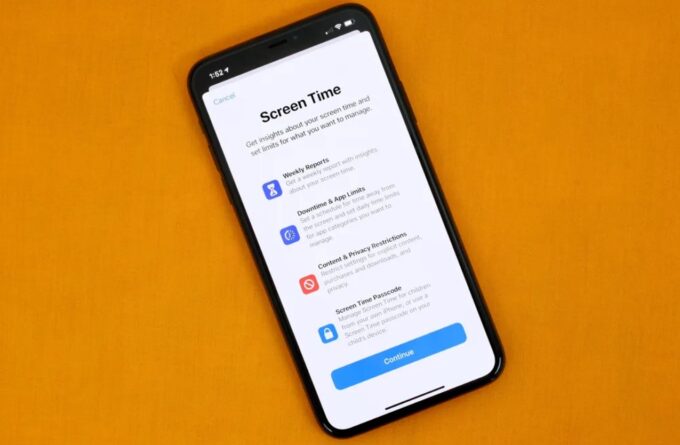
Source: cnet.com
In scrutinizing the facets of Screen Time control on iOS, astute users may yearn for strategies that transcend basic functionality to maximize effectiveness without incurring data loss or privacy concerns.
Discovering how to delete Screen Time data on iPhone [Updated] with precision can both enhance device performance and provide peace of mind regarding digital footprint management. With these sophisticated pointers, manipulate your device’s built-in features to cater to your unique preferences and circumstances.
Temporarily Disabling Screen Time Without Data Loss
For users hesitant to permanently delete Screen Time statistics on iPhone, there’s the prudent option of temporarily disabling the Screen Time feature. This maneuver allows for a hiatus in data collection without erasing other vital iPhone content.
By heading into the iPhone’s settings, users can selectively halt Screen Time, essentially pausing its oversight over app usage metrics. This serves as an excellent course of action for those seeking a break from usage monitoring without the consequence of losing other valuable data.
Restricting Screen Time Data Sync Across Devices
One of the savvy methods to clear Screen Time data on iOS device entails managing data sync preferences for individuals using multiple Apple devices.
Toggling off the ‘Share Across Devices’ option is an essential step to prevent Screen Time information from replicating across gadgets linked with the same Apple ID.
This proactive approach not only confines usage data to a single device but also augments data privacy and accuracy when tracking digital habits across different platforms.
Factory Reset as a Last Resort for Clearing Screen Time
Faced with the ultimate decision to comprehensively erase Screen Time statistics on iPhone, some may consider a factory reset. This draconian measure is the last resort, eradicating all data without partiality.
Should a user forget their Screen Time passcode, alternative assistance is available through tools like Joyoshare iPasscode Unlocker or the familiar restoration functionalities of iTunes on a trusted computer.
It’s of paramount importance to back up indispensable data prior to initiating a factory reset, ensuring that the annihilation of Screen Time records does not entail the loss of precious personal content.
FAQ
How can I delete Screen Time data on my iPhone?
To delete Screen Time data, go to your iPhone’s Settings, tap Screen Time, and then select ‘Turn Off Screen Time’ at the bottom. If you have a Screen Time passcode, you’ll need to enter it to confirm the action. Once disabled, Screen Time data is deleted and will stop tracking your usage.
Why might I need to clear Screen Time information from my iPhone?
Clearing Screen Time data may be necessary for a variety of reasons, such as privacy concerns, data accuracy, device performance, or preparing your iPhone for resale or transfer. Removing this data can help ensure that your device usage is tracked accurately going forward.
What happens to my device’s performance when I delete my Screen Time data?
If the Screen Time database is overloaded, it may slow down your device. Deleting the Screen Time data can improve your iPhone’s performance by freeing up system resources that were previously allocated for tracking and maintaining this information.
What should I do if I’ve forgotten my Screen Time passcode?
If you’ve forgotten your passcode, you can try to reset it by going to ‘Change Screen Time Passcode’ in the Screen Time settings and tapping ‘Forgot Passcode.’ You will need to enter your Apple ID credentials to reset it. Alternatively, third-party apps like Tenorshare 4uKey can help bypass the passcode without losing data.
Is there a way to disable Screen Time without a complete data wipe?
Yes, you can temporarily disable Screen Time without losing other data on your device. Go to Settings, tap Screen Time, and then select ‘Turn Off Screen Time’ at the bottom. This action will delete only the Screen Time data while preserving the rest of your device’s information.

